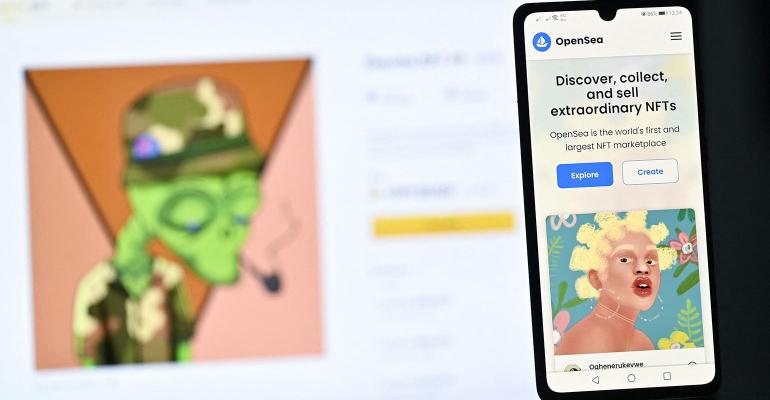There is a great deal of ambiguity concerning the rights you receive and the rights you give away when you buy or sell a non-fungible token (NFT).
As it stands now, the NFTs have no mechanism to automatically define the rights kept by the creator, owned by the seller or acquired by the buyer. An NFT is a code that: 1) records the chain of ownership of the NFT and 2) identifies the location of a securely stored digital asset. Not even the Smart Contract associated with the NFT, which allows a blockchain to execute automatic actions when certain events happen to the NFT, will automatically preserve or define intellectual property rights. Not only are creators’ rights at risk, so are those of third parties to the digital images tied to the NFT, particularly when those images affect the third parties' branding rights. Finally, there is no universal enforcement mechanism—all you can do is request that the NFT be taken down by the platform it is being sold on, such as OpenSea.
Providing clarity on rights to NFTs and digital assets is important to creators and collectors individually, but it is much more important to businesses and retailers to defend their hard-won branding and image in the retail marketplace, both virtual and physical. The display and transfer of images, logos, jingles and other intellectual property is now protected by trademarks, copyrights, design patents and rights of publicity. These items clarify who owns what and when; how those rights are registered and how you can enforce your rights. It's important to note that these protections do not automatically extend to NFTs and digital assets. In order to do so, you need to redraft the registration of those protections to include those digital assets; and, you need to craft Smart Contracts that provide a license, requiring a digital signature that allows access to information to both the licensor and licensee.
Once the intellectual property rights of digital assets are well defined, the advantages to businesses are immense. Inventories of tokenized products can be managed quickly and efficiently, and the encrypted blockchain is protection against fraud and knock-offs. As it exists now, there is greater transparency on such things as the repair history of a used car than there are for the property rights of NFTs.
To make this system work to its fullest potential for both creators of digital assets and businesses that use digital assets to enhance their brand, two things are needed: First, there has to be a uniform and universally acknowledged set of terms for what a license of intellectual property associated with a digital asset means, the scope of intellectual property rights, and to whom these rights are transferred or retained. The second is a quick way of identifying that the intellectual property rights of an NFT are protected along the lines of those universally acknowledged licenses.
At this point, it is good to remember that, though we are light years away from what our ancestors were dealing with more than a hundred years ago, there are, nonetheless, worthwhile lessons to be learned from the past. Specifically, the origin of the term, “All Rights Reserved.” That phrase, now outdated and unnecessary to protect intellectual rights, was a product of the Buenos Aires Convention of 1910. At that time it was created to provide protection to intellectual property as world trade became more global. It was agreed that any person who indicated that they reserve their rights to intellectual property gain protection in any signatory country. From this came the term “All Rights Reserved.” It was nearly 50 years later that “All Rights Reserved” was officially adopted. Indeed, the term still has some moral, if not legal weight when used on a creative work.
It is time for platforms and marketplaces such as Ethereum and OpenSea to agree on what the basic protections will be; and what code is needed in the Smart Contract that, when used, activates those rights for the owner, to protect both their rights, the buyer’s rights and the rights of third parties. It will go a long way in removing some of the ambiguities and misunderstandings of what NFTs do, and do not do, relative to intellectual property rights.
Matthew Erskine is Managing Partner at Erskine & Erskine.

